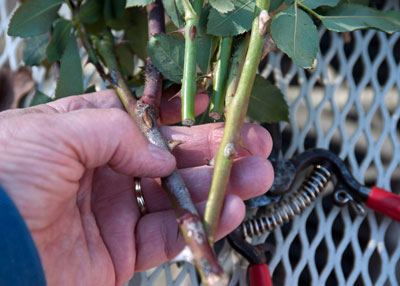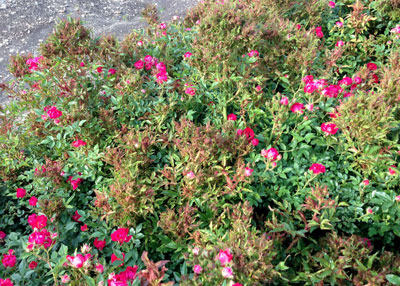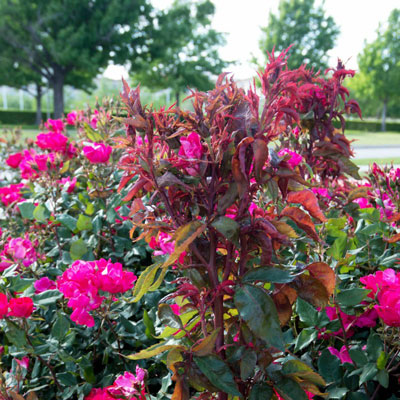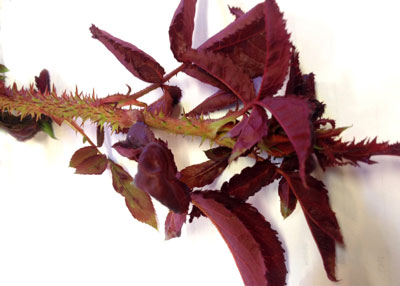Question of the Week: February 11, 2016

Rose pruning time is here.
“Isn’t this the right time to be pruning my rose bushes?”
Yes. You are right on the money. In fact, South Texas gardeners will find new growth starting up on their plants, so every day is critical. Prune bush roses back by 50 percent. Each cut should be made about 1/4-inch above a bud that faces out from the center of the plant. That will encourage outward-facing growth. Veteran rosarians will also suggest putting a drop of Elmer’s white glue on the cut surface to seal it from environmental influences.
Climbing roses that bloom repeatedly all season long should also be pruned now to remove errant or weak branches, but this pruning usually will not be as extensive as that given to bush roses.
The one exception to February pruning of roses would be for one-time bloomers that only produce flowers in the spring. Whether antique types of rose bushes or older climbers, these spring-only bloomers should be trimmed immediately after they finish flowering. The most common example we have is Lady Banksia rose.

Hand shears and loppers are about all you’ll need to prune roses.
However, rose questions don’t stop there. Here is what many in North Central Texas are asking:
“How can I tell if my roses have rose rosette before I go to the trouble of pruning them?”
Metroplex-area rose gardeners have been fighting a fatal virus in their plants for the past several years. It’s far from a new disease. Rose rosette virus has actually been around for decades. However, for no explainable reason, it has suddenly raised its ugly head and become epidemic in parts of North Texas and beyond. Knockouts showed it first, but it now appears that all varieties are susceptible. It’s extremely discouraging to people who have spent a lifetime loving and working with roses.

Rose rosette virus is even evident in winter.
RRV is transmitted by a microscopic mite. We have no control for the mite, and we have no preventive or curative treatment for the disease. Rose growers are told that all they can do is to remove their rose plants, roots and all, as soon as they see the strong “bull canes” that are loaded with extraordinarily high numbers of vicious thorns.

Vigorous “bull cane” growth is often the first sign of RRV infection.

Roses infested with RRV will have stems with several times the normal number of thorns.
I have left information on RRV on my website for the past year. We have photos and all the details.
https://neilsperry.com/notes/2015/03/rose-rosette-disease/
